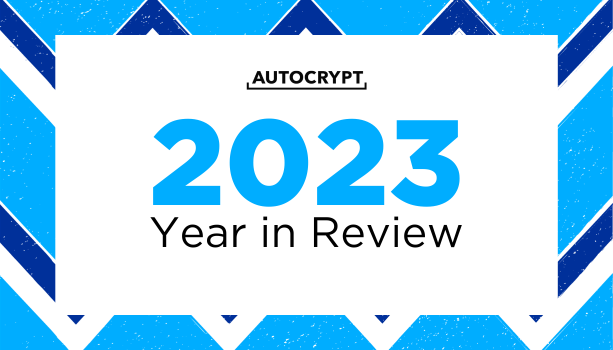In recent years, automotive OEMs worldwide have garnered attention with large-scale software recalls. Companies like Tesla and Rivian have issued recalls over issues potentially impacting vehicle functions or even jeopardizing driver safety. However, these recalls differ from traditional ones as they are conducted via over-the-air (OTA) updates, eliminating the need for vehicle owners to physically visit service centers. This shift signifies a transformation in the landscape of vehicle software recall.
When does a software recall happen?
When an automotive OEM or a safety regulator discovers a safety-related issue in a vehicle model, transportation authorities, such as the NHTSA, issue a “safety recall,” alerting vehicle owners about the safety risk. Such a decision is made when a vehicle contains malfunctioning components that may pose a safety risk or when a vehicle fails to meet legal standards. Previously, car owners receiving recall letters would have to visit the nearest service center to address the safety concerns.
How does a software recall work?
Today, the scenario has evolved significantly. With the increasing reliance on software for vehicle operations, recalls can now be conducted through over-the-air software or firmware updates.
A software recall functions identically to an OTA update, patching up issues, introducing new features, and making alterations to vehicles remotely, without necessitating a trip to the service center.
To enable OTA updates, cars must incorporate a telematics control unit (TCU) housing mobile communication interfaces, like 4G/5G or Wi-Fi, and memory to store driving and vehicle data. The OEM dispatches the software package to its vehicles from a cloud-based server, with cars downloading and installing updates automatically during regular use. To ensure that the OTA update is executed safely only validated software packets must be received and installed.
Once successfully installed, the vehicle reports its updated status to the OEM’s backend, marking it as updated in the recall system.
The transformation of vehicle recall
In the ever-evolving landscape of automotive technology, the traditional concept of vehicle recalls has undergone a transformative shift. The emergence of over-the-air (OTA) updates has revolutionized how safety fixes are conducted, offering convenience and cost-efficiency for both OEMs and vehicle owners.
In 2023, OEMs are projected to save nearly $500 million in the US through OTA recalls. These savings primarily stem from reduced maintenance and labor costs at traditional vehicle dealerships that historically handled safety fixes during recalls. Simultaneously, vehicle owners save time and money as their cars fix themselves through OTA upgrades, bypassing the need for a dealership visit.
Software recalls have been conducted over-the-air for the past few years. And many ask, “Is it really a “recall” if the problem is getting fixed (patched) through an OTA update?”
A prominent example is Tesla’s recall of over 2 million vehicles performed over-the-air. Tesla’s recall filing said that the company’s advanced driver assistance system, Autopilot, did not have sufficient system controls that prevented driver misuse and could, therefore, increase the risk of crash. As a result, the company had to recall the software in almost all Tesla vehicles in the US. The recall was conducted as an OTA software update that incorporated additional controls and alerts to the current Autopilot system.
The event sparked debates about whether it qualifies as a recall if the vehicle doesn’t require dealership servicing. Tesla’s CEO, Elon Musk, has fueled this debate, advocating for modernizing recall terminology, considering the nature of modern software recalls. He’s referred to labeling OTA software fixes as “outdated and inaccurate” when described as recalls.
Historically speaking, safety recalls have had a slew of negative sentiments associated with the term. On the one hand, the vehicle owners would have to go through the cumbersome task of visiting a dealership and repairing their vehicle, which could sometimes take days. On the other hand, manufacturers would have to incur extra expenses issuing the recall free of charge, as well as to deal with negative press and brand image associated with the safety recall.
Since safety recalls can be conducted seamlessly over-the-air, and do not follow the same process as traditional recalls, should they still be considered “recalls”? Or can they be regarded as “security patches” or, simply, a “software update”?
As we embrace the era of connected vehicles and software-driven functionalities, the race to create the most advanced vehicle is fiercer than ever. Automakers are spending countless resources on developing complex applications to secure the first mover advantage in an increasingly competitive market. As a result, manufacturers have an incentive to roll out new features at a faster pace.
While OTA updates surely allow for a faster innovation cycle in the industry, they may potentially encourage an environment where imperfect software is rolled out prematurely. And if the weight of a “safety recall” is lightened by a change of terminology, will automakers still bear the negative repercussions of rolling out potentially dangerous software and to what extent? Maybe the “safety recall” nomenclature serves as a checks and balances system that ensures OEMs are socially accountable for safety issues in their software.
Regardless of semantics, safety fixes via over-the-air updates present a far more convenient and time-efficient approach to recalls.
While debates persist about the nomenclature surrounding these updates, the undeniable efficiency and effectiveness of OTA recalls mark a significant step forward in automotive safety and maintenance. This evolution reflects not only technological advancements but also a fundamental shift in how we perceive and address safety concerns in the automotive world.
To stay informed about the latest news on mobility tech and software-defined vehicles, subscribe to AUTOCRYPT’s monthly newsletter.



